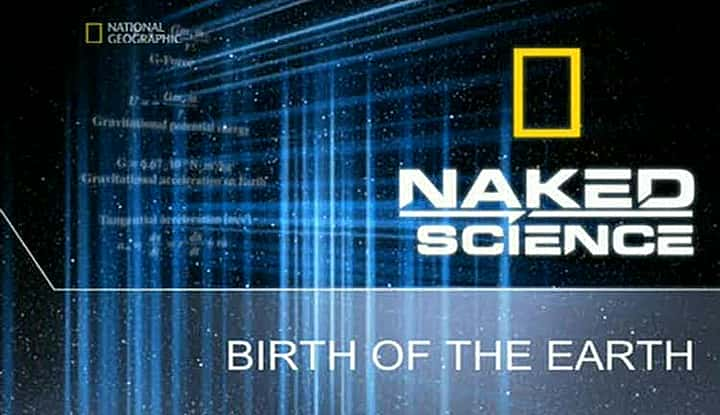|
|
Birth of the Earth - 纪录片1080P/720P/360P高清标清网盘迅雷下载

Birth of the Earth - 纪录片1080P/720P/360P高清标清网盘迅雷下载
Birth of the Earth,Are We Alone in the Universe,Asteroids: Deadly Impact,Birth of America,Birth of the Solar System,Birth of the Universe,Cosmos,Cracking the Earths Crust,Death of the Sun,Down To The Earth's Core,Earth - The Power of the Planet
General Information:
Science Documentary hosted by Eric Meyers andpublished by National Geographic broadcasted as part of NG Naked Science series in 2005 - English narration
Information
How did the Earth evolve to support life? Our planet now supports a huge diversity of living creatures requiring very special conditions, but what was the series of events that brought this unique set of conditions together? What did it take to make a world that would support human life?
Tagish Lake meteorite
The Tagish Lake meteorite impacted the Earth on January 18, 2000; the reported sighting in the Tagish Lake area in the Yukon Territory and northern British Columbia, Canada was followed-up by gathering more than 500 fragments of the meteorite, collected upon the lake's frozen surface. Post-event atmospheric photographs, also yielded the meteor trajectory. Most of the stony, carbonaceous fragments landed on the Taku Arm of the lake, becoming encased in ice as they entered the lake's frozen surface. As the meteorite fell to Earth, it set off a wide array of satellite sensors, as well as seismographs.
Analyses have shown that they are of a primitive age, containing unchanged stellar dust granules that may have been part of the cloud of material that created our solar system and Sun. The meteorite has proven to have come from the outer limits of the asteroid belt in our solar system. The Tagish Lake meteorite, before it impacted, was estimated at 4 metres in diameter and 56 tonnes in weight. However, when the fragments of the massive lump of rock were found, only 1.3 tonnes remained, meaning that around 97% of the meteorite had vaporised on its descent, during which the meteor finally exploded with around 1.7 kilotons of energy. Of these 1.3 tonnes of fragmented rock, only 0.1% was found and collected.
http://en.wikipedia.org/wiki/Tagish_Lake_meteorite
Stromatolites
Stromatolites were much more abundant on the planet in Precambrian (Pre-Cambrian) times.Prior to 2.4 billion years ago, the earth's atmosphere was rich in carbon dioxide. However, the Precambrian air lacked the oxygen that sustains the complex multicellular life that has evolved since the "Cambrian explosion" 540 million years ago. Stromatolites in the fossil record decline sharply in both diversity and number during the late Proterozoic eon, although they are present, but not common, in Paleozoic era strata. Today, stromatolites are quite uncommon in marine environments. As a result, they have become valuable "living fossils."
Modern stromatolites are mostly found in hypersaline lakes and marine lagoons where extreme conditions exclude animal grazing. One such location is Hamelin Pool Marine Nature Reserve, Shark Bay in Western Australia where excellent specimens are today observed. Fresh-water stromatolites can be found in Cuatro Ci�negas, a unique ecosystem in the Mexican desert.
http://en.wikipedia.org/wiki/Stromatolites
http://channel.nationalgeographic.com/channel/nakedscience/episodes.html
Technical Specs
Video Codec: DX50
Video Bitrate: 1996 kbps
Video Resolution: 432x688 (height x width)
Video Aspect Ratio: 3x5 (1:1,59)
Audio Codec: MPEG-1 Layer 3 (MP3) <0x0055>
Audio BitRate: 192 kbps
Audio Streams: 1
Audio Languages: English
RunTime: 47 min 29,96 s (71249 Frames)
Subtitles: English
Ripped by: jvt40
☆☆☆~~~~~~~~~~~~~~~~~~~~~~~~~~~
Birth of the Earth - 纪录片1080P/720P/360P高清标清网盘迅雷下载
下载地址:
游客 文件下载链接就在这里,在您回复评论成功后才能显示。
请勿回复无意义的灌水内容。下拉页面到最底部回复或者 【点击此处快捷回复】,回复后返回此处即可查看下载链接。 如您没注册本站会员,可以点击 注册本站,注册后即可回复下载。 |
小贴士:【影视自媒体解说文案请移步:夏至文案解说网 www.xiazhi.vip】上一篇:Birth of Life - 纪录片1080P/720P/360P高清标清网盘迅雷下载下一篇:Birth of the Oceans - 纪录片1080P/720P/360P高清标清网盘迅雷下载
|